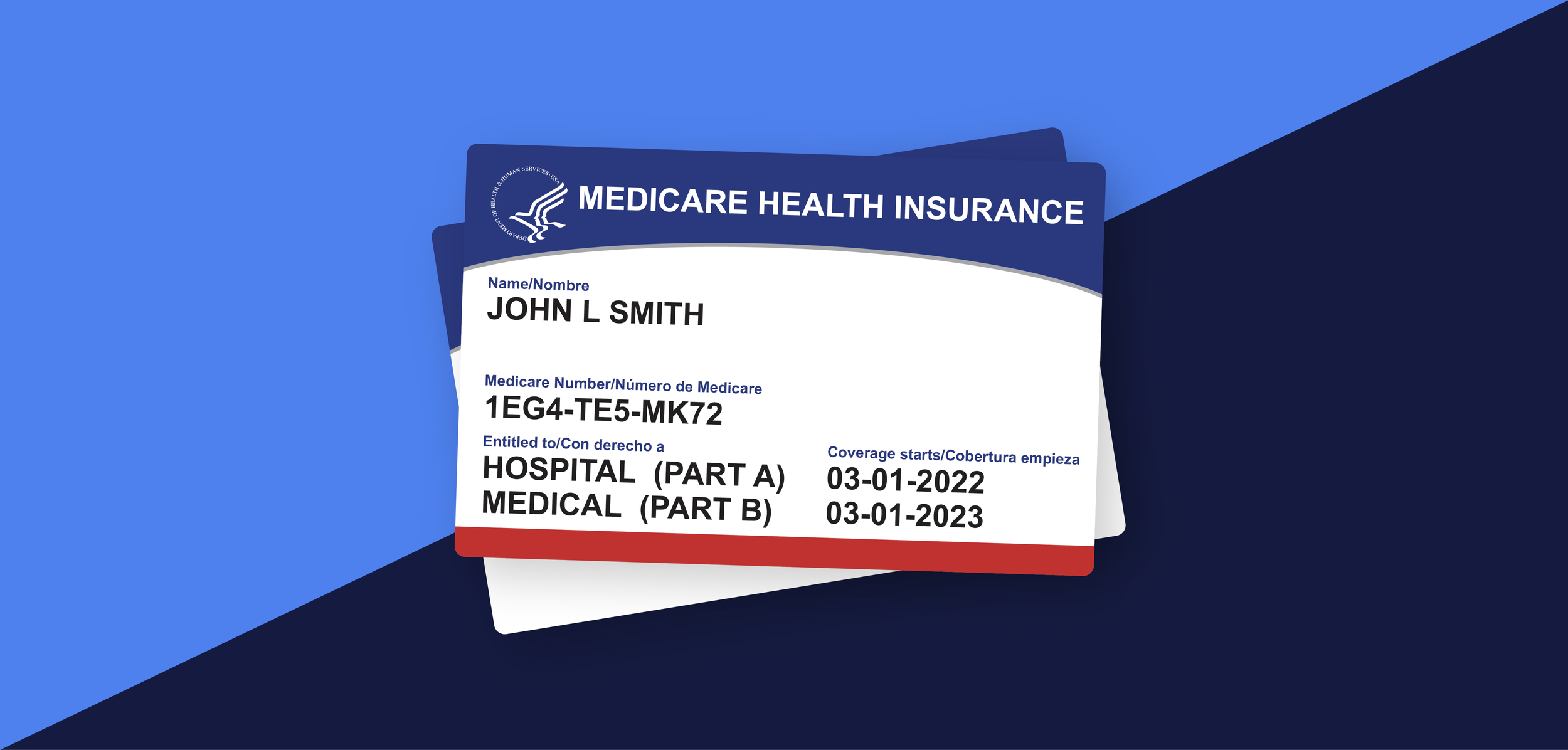Medicare 101: The Basics
Medicare, the national health insurance program for U.S. citizens and permanent legal residents, is the most common insurance options for seniors.
While chatter about a national health care system can be traced back to the early 1900s, the program wasn’t signed into law until 1965. Nineteen million people signed up for Medicare during its first year, and today, the program currently covers almost 66 million Americans (per the latest Centers for Medicare & Medicaid Services (CMS) data).
Since the program and its coverage play an important role in medical costs as you age, it’s imperative you understand exactly how Medicare works—especially if retirement is on your horizon. Let’s dive in.
How to qualify for Medicare
Most people qualify for full Medicare benefits at age 65 based on their (or their spouse’s) employment record or earlier if qualifying disabilities are present. Here are some prerequisites:
· You must be a U.S. citizen or permanent legal resident who has lived in the United States for at least five years.
· You or your spouse must have paid into Medicare payroll taxes while working for at least 10 years.
· You must be eligible to receive (or are currently receiving) Social Security or railroad retirement benefits.
You’ll receive basic Medicare coverage (Part A) free of charge when you turn 65 if you meet the above criteria.
If you fail to meet the above criteria but are a U.S. citizen or permanent legal resident who has lived in the United States for at least five years, you can still receive full Medicare benefits but must instead buy into them.
How to enroll in Medicare
If you’ve received Social Security or Railroad Retirement Board benefits for at least four months before turning 65, the government will typically automatically enroll you in Medicare Part A and Medicare Part B at age 65—with your Medicare card often arriving in the mail with instructions three months prior to your birthday.
All other eligible folks have a seven-month window to enroll in Medicare; this enrollment period begins three months prior to age 65 and ends three months after one’s birthday month. You can apply for Medicare benefits online or over the phone.
If you miss your initial enrollment period, don’t panic! You can sign up during the Medicare General Enrollment Period (January 1–March 31), with coverage beginning the month after you do so. However, you may be charged a penalty if you lack an SEP (special enrollment period), which is allowed in light of specific life events—such as losing employer coverage.
The four parts of Medicare
Medicare consists of four parts that each cover specific services. Medicare Part A and Medicare Part B are known as “Original Medicare,” whereby the government pays providers directly for patient services received. Almost all physicians and hospitals in the United States accept Original Medicare. Let’s explore all four parts in more detail…
Medicare Part A (hospital insurance): This covers patient care in a hospital or skilled nursing facility, in-home hospice, and limited home healthcare services. Those who enroll in Medicare receive Part A automatically and are typically not required to pay a monthly premium but instead a $1,632 deductible (as of 2024) per visit (as well as a portion of daily expenses for hospital stays extending beyond 60 days).
Medicare Part B (medical insurance): This covers medical services and supplies that are necessary to treat a health condition—including visits to doctors and other healthcare providers, medical equipment, and ambulance services. It also covers some preventive services. Those who lack “creditable coverage” from another source (e.g., an employer) are required to enroll in Part B, and a failure to do so may result in a 10% monthly premium fee for each 12-month period you could’ve had Part B but didn’t. Most patients pay a monthly premium for Part B, and all must meet a deductible for Part B before benefits kick in.
Medicare Part C (Medicare Advantage): These bundled plans, an alternative to Original Medicare (Parts A and B), are offered by private Medicare-approved companies. Most Part C plans include the same coverage provided by Parts A and B and also often loop in optional vision, dental, hearing, and prescription drug coverage and additional services including transportation to doctor’s visits—none of which are covered by Original Medicare. You can purchase a Medicare Advantage plan after you enroll in Original Medicare, and monthly premiums vary based on the types of benefits and deductibles required.
Medicare Part D (prescription drug coverage): This plan, administered by Medicare-approved private insurance companies, helps pay for both brand-name and generic drugs. You’re automatically eligible for Medicare Part D if you qualify for Original Medicare; that said, you’ll need to enroll in Medicare Part A and/or Part B as a prerequisite to Part D (and in fact don’t need the latter if your Medicare Advantage plan includes prescription drug coverage).
Other types of insurance to familiarize yourself with
Medicare Supplement plans: Offered through various insurance companies, Medicare Supplement plans (also known as Medigap plans) cover many out-of-pocket costs Original Medicare doesn’t such as copayments and deductibles. Some policies also include medical care when you travel beyond U.S. borders, something Original Medicare doesn’t include.
While the initial open enrollment window for Medigap is six months long (beginning on the date your Medicare Part B becomes effective), you can still purchase a Medigap policy after your window closes. However, enrolling during your six-month window means insurers cannot deny you coverage or charge you more for any preexisting conditions.
Medicaid: This joint federal-state government program helps cover medical costs for those on a limited income. Typical coverage includes doctor’s visits, hospital stays, and preventive care. Each state has different eligibility requirements, and some people qualify for both Medicare and Medicaid.
The biggest, most important item Medicare doesn’t cover
Many people incorrectly assume Medicare covers long-term care. The truth is that it doesn’t—except in very limited circumstances. With recent studies showing median nursing home costs rise above $100,000 a year, these expenses can quickly quash retirement dreams.
Long-term care insurance policies typically cover out-of-pocket expenses accompanying home care, assisted living, and nursing home care—benefits not covered by Medicare or other public programs.
These policies have a few key benefits. Beyond protecting your savings, they also provide you with additional care options (because even if you qualify for Medicaid, you’re still restricted to facilities that accept payments from the program).
Experts recommend you secure a policy no later than your fifties so you can lock in a lower premium. You can even purchase a life insurance policy with a long-term care rider. One big advantage of an LTC rider (over a standalone LTC policy) is that if you don’t use the care benefit, the policy still pays the death benefit—whereas standalone policies can make you feel like you’re wasting money if you never file a claim.
In sum: Medicare 101
With healthcare expenses constantly rising over time, it’s important to understand your Medicare options to help combat these costs—especially during retirement. If you find Medicare insurance options confusing, however, you certainly aren’t alone. Thankfully, a Medicare insurance expert or financial advisor can help you navigate these complex options to ultimately pinpoint the best choice for our own unique needs.
FAQs
-
The Medicare Giveback benefit is offered by some Medicare Advantage plans, whereby the plan carrier will pay some (or all!) of your Medicare Part B premium (currently $174.10). To qualify, you must be enrolled in Original Medicare, pay your own Part B premium, and live in a plan service area that provides this benefit.
-
Overall, there is no right or wrong answer here—both options in fact work well. However, if you’re like many, decisions about which program best suits you are not so clear-cut as each has its pros and cons: which is precisely why we recommend speaking with your financial advisor or a Medicare expert, accordingly. You can also click here to read more about Medicare Advantage and Medigap plans.
-
Medicare will generally act as your primary insurance: meaning that whenever you incur a healthcare expense, the bill is first submitted to Medicare. Your secondary insurance would then kick in to cover any remaining balance.
However, if you still belong to an employer group plan that covers 20 or more employees or is part of a multi-employer group health plan (often jointly sponsored by two or more employers), this would act as the first payer with Medicare as a secondary option—whether you have coverage through your employer or are covered via your spouse’s plan.
-
While Original Medicare does not cover routine dental or vision care, some Medicare Advantage plans do.
———
Vision Retirement is an independent registered advisor (RIA) firm headquartered in Ridgewood, New Jersey. Launched in 2006 to better help people prepare for retirement and feel more confident in their decision-making, our firm’s mission is to provide clients with clarity and guidance so they can enjoy a comfortable and stress-free retirement. To schedule a no-obligation consultation with one of our financial advisors, please click here.
Disclosures:
The opinions voiced in this material are for general information only and are not intended to provide specific advice or recommendations for any individual.




